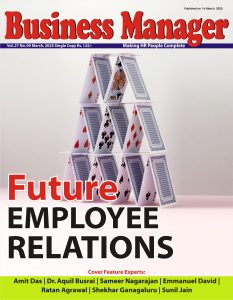In recent years, the landscape of recruitment and hiring has undergone a significant transformation, driven by evolving corporate paradigms, technological advancements, and changing workforce dynamics. Consequently, organizations are compelled to reassess and adapt their hiring practices to stay competitive in this dynamic environment.
In the contemporary digital era, attracting tech-savvy talent necessitates a mutual commitment to meeting their expectations. Recruitment is no longer a unilateral process; organizations seek the best fit for their teams, while potential employees actively search for companies aligned with their needs. Thus, it is imperative for organizations to modify their hiring methods to gain a competitive advantage in the evolving job market.
Also read: 4.25 employees lost jobs in Tech companies in last two years
Here are key hiring practices for navigating the dynamic job landscape in the future of hiring:
Embrace Diversity and Inclusion: Recognizing the increasing importance of diverse and inclusive workplaces, organizations must cultivate environments that foster deep employee commitment and trust. A Harvard Business Review study suggests that businesses with a diverse workforce see a 19% increase in revenue. Consequently, valuing diverse perspectives and backgrounds is critical for attracting qualified candidates and fostering a more inclusive workplace culture.
Flexible Work Arrangements: While the traditional office model remains relevant, flexible work arrangements have gained prominence in the contemporary work landscape. Remote and hybrid working models have become the norm, allowing organizations to transcend geographic boundaries and tap into a broader talent pool. Embracing these changes is vital for building a competent workforce, promoting employee satisfaction, and maintaining a healthy work-life balance. A recent market research conducted by Uplers to understand preferences of Indian tech and digital talents revealed that 64% of talent with 7-12 years of work experience already currently working remotely prefer working in remote setup, whereas 49% of those currently working in-office setup would prefer working remotely. Employers must adapt and switch to remote hiring, with more Indian talents preferring to work remotely.
Implement Virtual Recruitment Practices: In the era of digitalization, virtual hiring has become a prevailing trend. Interviews and assessments are no longer confined to physical locations, thanks to technology. Virtual recruitment practices enable global companies to interview candidates from various locations, saving time and resources. Consequently, adapting to virtual recruitment practices has become essential for organizations aiming to leverage top Indian talent beyond their immediate reach.
Recruitment is no longer a unilateral process; organizations seek the best fit for their teams, while potential employees actively search for companies aligned with their needs.
Leverage Technology: The advent of technology, particularly artificial intelligence and machine learning, has revolutionized various aspects of the hiring process. These technologies facilitate candidate matching and sourcing through sophisticated algorithms, enabling businesses to navigate extensive talent pools and identify the ideal fit efficiently. Harnessing the power of technological advancements has thus become imperative for organizations to streamline their hiring procedures and enhance the accuracy of matching talent with suitable roles beyond the geographical limitations.
Fostering a Resilient Workplace: Adjusting hiring approaches to meet the demands of the evolving job market is not merely a necessity but a strategic decision to excel in a competitive landscape. Organizations can cultivate innovative and adaptable teams by emphasizing diversity and inclusion, embracing flexible work arrangements, implementing virtual recruitment procedures, and leveraging cutting-edge technology for various hiring processes. As the job market continues to evolve, companies actively updating their hiring approaches will not only attract top talent but also build a robust and future-ready workforce.
In conclusion, organizations today are at various stages of technology adaptation, and those leveraging it in the best way possible within the shortest time frame are likely to thrive and get ahead of the curve faster than others.
Stay connected with us on social media platform for instant update click here to join our LinkedIn, Twitter & Facebook
























